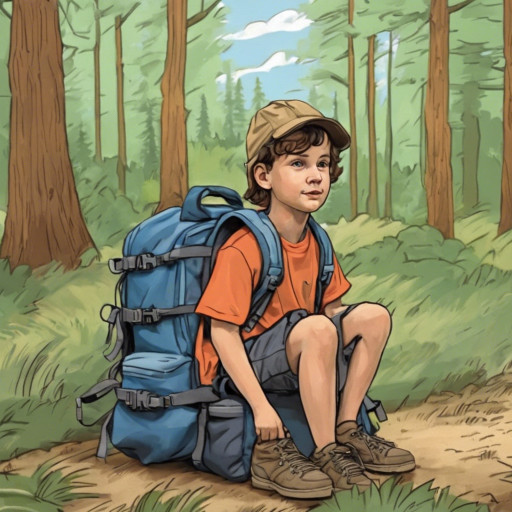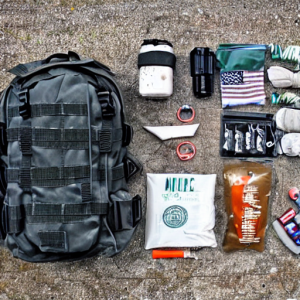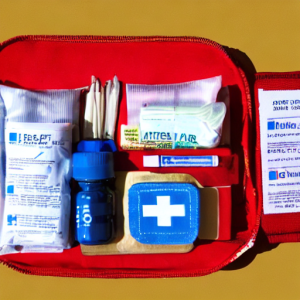Empower Your Family’s Safety: A Comprehensive Guide to Assembling Bug Out Bags for Children
As devoted parents, our primary duty is to safeguard the health and safety of our children. While we all hope for the best outcomes, it’s crucial to prepare for any unexpected disasters or emergencies that may arise. A bug out bag—an essential collection of survival items—serves a pivotal role in any disaster preparedness strategy, enabling your family to endure until professional help arrives. This guide will delve into a frequently overlooked aspect: assembling specialized bug out bags tailored specifically for children. Our aim is to provide you with in-depth insights and practical tips for effectively packing bug out bags that cater to the distinct needs of your kids, ensuring their safety and comfort during unforeseen circumstances.

Understanding the Critical Role of Bug Out Bags for Children in Emergencies
When preparing for emergencies, it is vital to acknowledge the unique vulnerabilities that children face during crises. The concept of bug out bags for children arises from the pressing need to protect our youngest family members in unforeseen circumstances. By thoughtfully assembling these customized survival kits, we empower children to take an active part in their safety, significantly reducing the anxiety experienced by caregivers during emergencies. The empowerment gained from having a bug out bag allows children to feel more secure and prepared, fostering a sense of responsibility that is essential for their development.
Typically, children rely on adults for guidance and reassurance, often looking to their parents during chaotic times. However, in emergencies, caregivers are frequently preoccupied with essential tasks such as evacuation planning and critical decision-making. A well-equipped bug out bag serves as a vital resource, enabling children to navigate challenging situations with greater independence and confidence, at least temporarily, thereby enhancing their ability to cope effectively. This independence not only reassures children but also aids in their emotional development, equipping them with skills they can utilize in various situations.
Moreover, bug out bags symbolize more than just practicality; they convey an empowering message. By equipping children with necessary tools, we instill a sense of responsibility and resilience, empowering them to manage unexpected events. When children possess their own bags, they gain a sense of control over their immediate surroundings, which significantly enhances their emotional stability during crises, fostering feelings of safety and self-efficacy. This empowerment is crucial as it lays the groundwork for a proactive mindset in facing challenges.
From a physical standpoint, children have specific requirements that differ significantly from adults. Their dietary needs are unique due to their ongoing growth and development. Therefore, bug out bags must include age-appropriate food, clothing, and medical supplies tailored to their needs. Special attention should be given to essential items such as diapers, formula, and any necessary medications for younger children. This meticulous customization ensures that their physical needs are met, greatly contributing to their overall health and comfort during trying times.
Recognizing that children experience stress differently from adults, both emotionally and psychologically, is crucial. Addressing the psychological well-being of children during emergencies is essential for effective preparedness. Including comforting items in bug out bags—such as familiar toys or cherished blankets—can provide the stability necessary to alleviate anxiety and fear. A comprehensive approach to emergency preparedness acknowledges the importance of addressing children’s emotional needs alongside their physical requirements, ensuring a truly effective strategy that supports their well-being in all aspects.
The specialized contents of a child’s bug out bag underscore the critical need for tailored emergency preparedness. Just as we consider the unique needs of individuals with disabilities or medical conditions, we must also recognize that children require specialized strategies for effective readiness. By ensuring bug out bags are crafted specifically to cater to the needs of younger family members, we guarantee their inclusion in essential emergency planning efforts, fostering a sense of community and shared responsibility.
How to Select the Perfect Bug Out Bag to Meet Your Child’s Unique Needs
 Choosing the right bag for your child’s bug out needs requires careful consideration of both comfort and practicality. Selecting an appropriate backpack is vital to ensuring that children can carry their emergency supplies effortlessly and effectively, which is crucial for their overall well-being during stressful situations. A well-chosen bag can make a significant difference in how children respond to emergencies.
Choosing the right bag for your child’s bug out needs requires careful consideration of both comfort and practicality. Selecting an appropriate backpack is vital to ensuring that children can carry their emergency supplies effortlessly and effectively, which is crucial for their overall well-being during stressful situations. A well-chosen bag can make a significant difference in how children respond to emergencies.
One key feature to consider in a backpack is the presence of multiple compartments. These compartments offer an excellent solution for organizing various supplies, allowing for a systematic arrangement of essentials. A well-organized bag enables quick access to critical materials, which is essential in emergencies. The capability to separate items such as water, snacks, clothing, and first aid supplies not only streamlines retrieval but also optimizes resource usage during those crucial moments, making a significant difference when time is of the essence.
Equally important is assessing how well the backpack fits your child’s body. An improperly fitting bag can lead to discomfort, strain, and potential long-term health issues. Parents should pay close attention to the size, weight distribution, and overall design of the backpack. Look for features such as adjustable straps that allow for a customized fit according to your child’s height and body shape. This adjustment enhances comfort and reduces the risk of injury or physical strain, making it easier for the child to manage their bag effectively.
A well-fitting rucksack not only ensures your child’s physical comfort but also boosts their confidence and mobility during emergency evacuations. A properly fitted bag enables better balance and stability, providing a sense of security amidst potentially chaotic situations. Balancing functionality with ergonomic design is a crucial aspect of preparing children for emergencies, ensuring they can navigate their environment safely and effectively.
Involving children in the decision-making process enhances their sense of ownership over their bug out bag. By considering their preferences and comfort levels, parents can foster a greater sense of responsibility towards their emergency supplies. When children feel included in this process, they are more likely to take ownership of their bug out bag, reinforcing their preparedness mindset and making them more proactive in future situations. This inclusion promotes a family-oriented approach to safety and preparedness.
Prioritizing Proper Hydration for Children During Emergencies
When preparing children for emergencies, the significance of maintaining proper hydration cannot be overstated. In times of crisis, ensuring that they stay adequately hydrated becomes even more critical for preserving health and well-being. Therefore, prioritizing water-related supplies in your child’s bug out bag is a fundamental aspect of their emergency readiness strategy that should not be overlooked.
Taking proactive steps to ensure that your child has access to a reliable and portable hydration source is paramount. Consider including a lightweight water bottle or a hydration pack designed specifically for children. Choosing the right container is not merely about convenience; it’s about addressing the specific needs and abilities of children. Opt for designs that are easy for small hands to grip and carry, encouraging them to take responsibility for their hydration during emergencies.
Incorporating hydration packs can serve a dual purpose: they provide a hands-free way for children to carry water while also making hydration more appealing. Often designed in vibrant colors and featuring child-friendly themes, these packs transform essential hydration into an engaging accessory that encourages regular water intake. This can help establish positive hydration habits that last beyond emergency situations, promoting lifelong health and well-being.
Use this opportunity to educate your child about the importance of staying hydrated while packing their water supplies. Emphasize the critical role water plays in maintaining health, especially during stressful situations. Highlight that water is essential for quenching thirst and supporting all bodily functions, particularly during times of physical exertion or high stress. Teaching these concepts empowers children to understand their body’s needs better.
Additionally, discuss with your child how to recognize the signs of dehydration. Teaching them to identify symptoms such as dizziness, fatigue, or dark urine empowers them to monitor their hydration levels actively. This knowledge equips children with essential life skills, enabling them to advocate for their needs, even in emergencies. By fostering this awareness, you are nurturing their ability to care for themselves and respond appropriately in various situations.
Adopting a proactive and informed approach to hydration is essential in preparing children for unforeseen events. By integrating these lessons into the bug out bag preparation process, you are addressing immediate hydration needs while simultaneously empowering them with skills that foster independence and resilience. Emphasizing hydration in your preparedness planning is a vital element in nurturing self-sufficiency and responsibility in children as they navigate challenges.
Nutrition: Curating the Best Food Supplies for Your Child’s Bug Out Bag
The nutritional quality of the food a child consumes significantly influences their overall health, especially in stressful situations. Thus, when assembling your child’s bug out bag, including non-perishable food items is essential to meet their nutritional needs during unforeseen challenges. Proper nutrition plays a critical role in maintaining energy levels and emotional stability.
 When selecting food items for the bug out bag, prioritize nutritious and diverse options. Products such as granola bars, fruit snacks, and meal replacement bars are practical choices as they require no refrigeration and are easy to consume. These foods not only provide essential nutrients but also ensure that children maintain their energy levels during emergencies, which is crucial for their physical and emotional well-being.
When selecting food items for the bug out bag, prioritize nutritious and diverse options. Products such as granola bars, fruit snacks, and meal replacement bars are practical choices as they require no refrigeration and are easy to consume. These foods not only provide essential nutrients but also ensure that children maintain their energy levels during emergencies, which is crucial for their physical and emotional well-being.
Focusing on nutritional value does not mean sacrificing flavor. Choose food items that are both healthy and enjoyable for children. This thoughtful selection encourages kids to willingly eat the provided food during stressful situations, benefiting their physical health as well as their emotional comfort. Ensuring that food options are both nutritious and appealing can help mitigate some of the stress associated with emergencies and keep children’s spirits high. This approach also helps to normalize their experience, making it less daunting.
Incorporating a variety of food options that cater to different dietary needs exemplifies a strategic approach. While granola bars offer quick energy, fruit snacks provide essential vitamins and minerals. Meal replacement bars can deliver a comprehensive nutritional profile, ensuring balanced nutrition even in challenging times. This diversity not only addresses the needs of a growing body but also underscores the importance of maintaining a balanced diet, even in emergencies. Understanding their dietary needs is crucial in creating a successful bug out bag.
Regularly checking the expiration dates of food items in the bug out bag is crucial for ensuring its continued effectiveness. Non-perishable does not mean indefinite, so replacing items nearing their expiration date is a proactive strategy to guarantee that your child has safe and nutritious options. This routine also allows for adjustments to accommodate changing preferences and dietary needs as your child grows, ensuring that the food remains relevant and appealing. Involving children in this process can also teach them about food safety and nutrition.
These food items not only satisfy children’s physical needs during crises but also play a vital role in alleviating stress and providing a sense of normalcy. Familiar snacks can serve as comfort items, helping them cope with the unpredictability of emergencies. By carefully selecting and routinely replenishing the non-perishable food in your child’s bug out bag, you meet their nutritional needs while supporting their mental well-being during times of crisis. This holistic approach underscores the importance of addressing both the physical and emotional aspects of a child’s preparedness.
Selecting Appropriate Clothing and Protective Gear for Emergencies
When compiling a thorough bug out bag for your child, focusing on clothing is essential for ensuring their readiness. It’s not just about comfort; packing appropriate garments suited for current weather conditions is crucial for maintaining health and safety during emergencies. The right clothing can significantly impact a child’s ability to cope with challenging situations and ensure they maintain warmth and protection.
Consider the basics, such as extra socks and pants, which are often overlooked yet vital for a child’s comfort and hygiene. These items are essential not only for physical well-being but also contribute to a sense of normalcy and emotional stability during crises. A warm hat is another versatile piece that provides protection from the elements and insulation, especially in colder temperatures, ensuring your child can stay warm and comfortable throughout any emergency situation.
 The clothing provisions should be influenced by your child’s age, size, and the typical weather patterns in your area. For younger children, including rain gear for unexpected downpours is wise, ensuring they remain dry and comfortable. In colder climates, gloves are essential for protecting delicate hands from freezing temperatures, while sturdy shoes designed for walking or navigating various terrains are crucial for ensuring mobility and safety during evacuation scenarios.
The clothing provisions should be influenced by your child’s age, size, and the typical weather patterns in your area. For younger children, including rain gear for unexpected downpours is wise, ensuring they remain dry and comfortable. In colder climates, gloves are essential for protecting delicate hands from freezing temperatures, while sturdy shoes designed for walking or navigating various terrains are crucial for ensuring mobility and safety during evacuation scenarios.
As children grow, their clothing needs evolve. Regular evaluations and updates of the clothing in the bug out bag are necessary to accommodate their changing size and requirements. A well-fitted item not only enhances comfort but also facilitates movement—an essential quality during emergencies where agility may be required. Ensuring that clothing is appropriate for the specific age and developmental stage of the child is crucial for their comfort and practicality, helping them feel more secure.
Seasonal changes add complexity to clothing selection factors. What works in one season may not suffice in another. Therefore, adapting the contents of the bug out bag according to seasonal demands is essential. This adaptability ensures your child is well-equipped to handle diverse weather conditions, whether it’s the sweltering heat of summer or the cold and rain of winter. Being prepared for changing conditions can make a significant difference in a child’s ability to cope with emergencies and enhance their resilience.
Including Comfort Items and Entertainment in Bug Out Bags for Emotional Resilience
Recognizing the emotional toll that emergencies can have on children underscores the importance of including comfort items in their bug out bags. Providing familiar objects that foster a sense of security and familiarity is essential for supporting their mental well-being during uncertain times. Emotional comfort can be just as important as physical preparedness, enabling children to feel more at ease in challenging situations.
Consider the comfort your child derives from their favorite stuffed animal. During moments of uncertainty, this beloved companion serves as more than just a toy; it becomes a source of emotional support and reassurance. Similarly, a cherished blanket can provide both physical warmth and emotional comfort, acting as a familiar touchstone amid the chaos of emergencies. These comforting items can play a pivotal role in helping children manage stress and anxiety during difficult times.
Including a beloved book in their bug out bag can also offer reassurance. Familiar stories are powerful antidotes to fear. A well-loved book can serve as a grounding mechanism, providing continuity and stability during times of upheaval. Whether it’s a favorite bedtime story or a cherished picture book, having it on hand can help ease anxiety and provide a welcomed distraction during stressful moments, allowing children to escape into a world of imagination.
Furthermore, incorporating games, puzzles, or other small activities can effectively engage children and distract them from the distressing events around them. These diversions not only serve as entertainment but also provide a constructive outlet for excess energy or anxiety. Activities like coloring books, compact puzzles, or simple card games can offer a welcome escape and contribute to a more positive experience during difficult times.
The psychological benefits of comfort items cannot be overstated. Children gain significant emotional support from tangible reminders of normalcy during stressful periods. These items serve as anchors, providing familiarity and security when their world feels chaotic and unpredictable. By intentionally curating comfort items in the bug out bag, caregivers demonstrate a commitment to addressing not only a child’s physical needs but also their emotional well-being, fostering resilience in the face of adversity.
Recognizing the unique challenges that children face during emergencies is crucial. Providing them with tools to navigate these difficulties fosters resilience and security. These comfort items contribute to a holistic approach to emergency preparedness, acknowledging both practical and emotional needs for a well-rounded strategy that supports overall well-being.
Must-Have Supplies for Every Child’s Bug Out Bag
 In addition to the previously mentioned items, every bug out bag for children should include vital supplies that contribute to their safety and well-being during emergencies. Here’s a comprehensive checklist of necessary items that should be included:
In addition to the previously mentioned items, every bug out bag for children should include vital supplies that contribute to their safety and well-being during emergencies. Here’s a comprehensive checklist of necessary items that should be included:
1. Comprehensive First Aid Kit: Ensure your bug out bag contains a first aid kit equipped with essential supplies. Include band-aids, antiseptic wipes, gauze pads, an emergency blanket, and any prescribed medications your child may need.
2. Personal Identification and Emergency Contact Information: Include a laminated card with your child’s name, address, emergency contacts, and any critical medical information in case you become separated.
3. Flashlight with Extra Batteries: A portable flashlight can be invaluable in low-light situations. Opt for lightweight LED flashlights that offer longer battery life and are easy for children to use, ensuring they can find their way in the dark.
4. Personal Hygiene Products: Include travel-sized personal care items, such as hand sanitizer, toothpaste, toothbrush, and soap. These items help maintain hygiene and prevent the spread of germs, which is especially important in stressful situations.
5. Whistle: Teach your child the importance of signaling for help when necessary. Including a whistle in their bug out bag enables them to attract attention in emergencies, enhancing their safety and ensuring they can call for help if needed.
6. Cash and Important Documents: Include copies of vital documents like birth certificates, passports, and insurance information, along with a small amount of cash in various denominations for emergency situations, ensuring you are prepared for any eventuality.
7. Emergency Contact List: A laminated list of emergency contacts, including phone numbers, addresses, and instructions for secure meeting locations, should be included in the bug out bag to ease communication in stressful situations, allowing for efficient coordination.
Empowering Children Through Education on Emergency Preparedness
Preparing bug out bags is not just a standalone task; it is supported by an equally vital component—education. As children gather tangible resources, understanding the purpose of their bug out bag and how to use it is critical for developing their ability to respond effectively to potential emergencies. This education fosters independence and confidence, equipping them with essential skills.
By taking the time to educate your child about the contents of their bug out bag, you are investing in their preparedness and confidence. Explain the function of each item, eliminating any ambiguity regarding their inclusion. This familiarity fosters a sense of responsibility and ownership over their emergency kit. When children understand how to use each item, the bug out bag transforms from a mere collection of belongings into a valuable resource they can actively utilize in times of need.
To reinforce the practical knowledge gained during the educational phase, conducting regular drills or simulations is beneficial. These exercises allow children to practice what they’ve learned, reinforcing the importance of remaining calm and following instructions during emergencies. Simulations can range from simple tasks, like putting on a rain poncho, to more complex scenarios, such as evacuating a designated area. The goal is to instill a sense of preparedness and familiarity, empowering children to draw upon their training when faced with real-life emergencies.
Beyond the practical aspects of using the bug out bag, education plays a crucial role in shaping a child’s mindset during emergencies. Teach them the importance of staying calm, emphasizing that a clear head improves decision-making and responsiveness. Discuss the necessity of following directions from parents, caregivers, or emergency personnel. This foundational knowledge transforms the bug out bag from a simple collection of materials into a comprehensive toolkit that equips children with both physical resources and mental fortitude to tackle unforeseen challenges.
Creating a Regular Maintenance Schedule for Effective Bug Out Bag Updates
The effectiveness of a children’s bug out bag extends beyond its initial packing; it necessitates a commitment to regular checks and updates for continued reliability. Establishing a routine for reviewing and replenishing the contents of the bag is crucial for ensuring its effectiveness during emergencies. This practice not only addresses practical concerns but also instills a sense of responsibility in your child, enhancing their understanding of the importance of being prepared for any situation.
Regularly inspecting the bug out bag serves as a preventative measure to ensure it contains functional and up-to-date supplies. It is critical to check for expired or damaged items, as these can potentially hinder the bag’s effectiveness. For instance, expired medications or water purification tablets may not perform as intended, compromising safety in emergencies. Routine checks allow for timely identification and replacement of necessary supplies, ensuring that the bag remains a reliable resource.
The Article Kids’ Bug Out Bags: Essential Packing Tips and Tricks Was Found On https://limitsofstrategy.com


2 Responses
I really resonate with the emphasis on preparedness for our children’s safety in your guide. It’s so crucial, especially in a world where emergencies can strike unexpectedly. When I first started thinking about bug out bags for my family, I was surprised at how different the needs of children can be, compared to adults. For instance, my kids have unique comfort items that would provide them with emotional support during stressful situations—things like their favorite stuffed animals or a small blanket. I’ve found that including these personal items in their bug out bags not only addresses practical needs but also offers them a sense of security and familiarity in chaotic situations.
Your guide really sheds light on the importance of preparing children for unexpected emergencies. It’s something I think many parents overlook, myself included until recently. I read about a family in my community who had a power outage for several days due to severe weather. They weren’t prepared, and it was a real eye-opener for all of us.